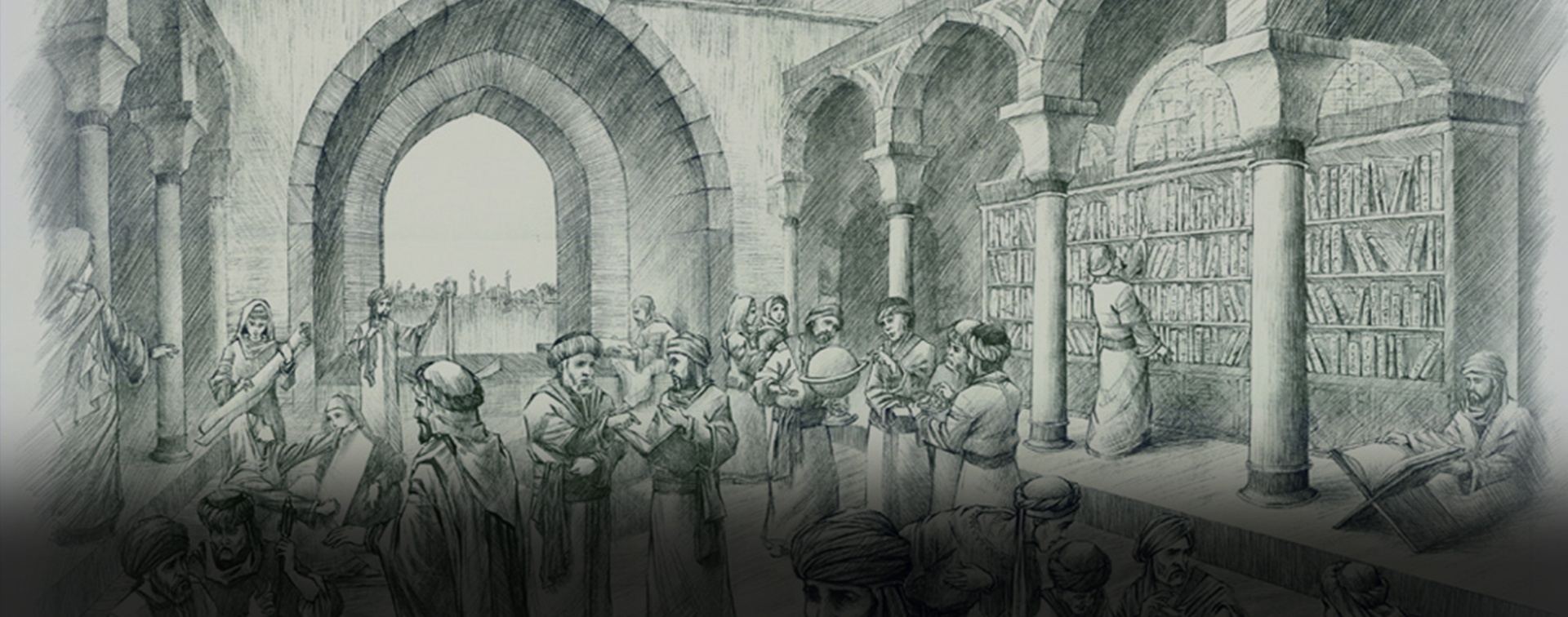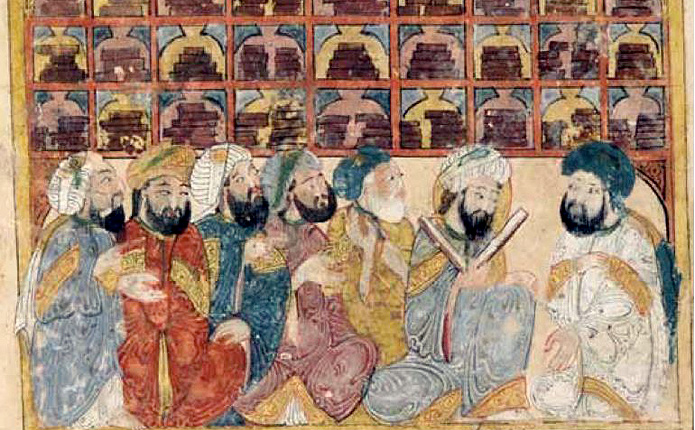History of Baghdad Wikipedia
Table Of Content

At the House of Wisdom, in Baghdad, scholars pored over Indian books on mathematics. These works used a set of ten symbols to represent numbers-not letters of the alphabet, as in Baghdad and Rome. In the early 800s, mathematician Muhammad ibn Musa al-Khwarizmi wrote a book on how to do math using the Indian system. Eventually, people all over Europe followed Al-Khwarizmi's example-and switched to the "Arabic" numerals we use today. The Bab al-Sharji district in the centre of Baghdad derives its name, which means east gate, from the medieval fortifications of the city. During the brief British stay at the end of the first world war, its gatehouse was used as a garrison church.
Notable intellectuals
The city was rebuilt and flourished under Ilkhanid rule, but never rose to its former glory. It was briefly occupied by Safavid Persia in 1508, but fell to the Ottoman Empire in 1534. With the dissolution of the Ottoman Empire, Baghdad fell under the British Mandate in 1920 and became the capital of the independent Kingdom of Iraq in 1932 (converted to a Republic in 1958).
Related Publications
The masterplans of the city (1967, 1973) were delivered by the Polish planning office Miastoprojekt-Kraków, mediated by Polservice.[83] However, the Iran–Iraq War of the 1980s was a difficult time for the city, as money was diverted by Saddam Hussein to the army and thousands of residents were killed. Iran launched a number of missile attacks against Baghdad in retaliation for Saddam Hussein's continuous bombardments of Tehran's residential districts. In 1991 and 2003, the Gulf War and the US invasion of Iraq caused significant damage to Baghdad's transportation, power, and sanitary infrastructure as the US-led coalition forces launched massive aerial assaults in the city in the two wars. Also in 2003, a minor riot in the city (which took place on 21 July) caused some disturbance in the population. The historic "Assyrian Quarter" of the city, Dora, which boasted a population of 150,000 Assyrians in 2003, made up over 3% of the capital's Assyrian population then.
In other languages
Although some of the princes of the previous Umayyad dynasty had begun to gather and translate Greek scientific literature, the Abbasids were the first to foster Greek learning on a large scale. Many of these libraries were private collections intended only for the use of the owners and their immediate friends, but the libraries of the caliphs and other officials soon took on a public or a semi-public character.[60] Four great libraries were established in Baghdad during this period. Another was established by Sabur ibn Ardashir in 991 or 993 for the literary men and scholars who frequented his academy.[60] This second library was plundered and burned by the Seljuks only seventy years after it was established. This was a good example of the sort of library built up out of the needs and interests of a literary society.[60] The last two were examples of madrasa or theological college libraries.
Between 813 and 833, the three brothers were successful in their works in science, engineering, and patronage. Abū Jaʿfar, Muḥammad ibn Mūsā ibn Shākir (before 803 – February 873), Abū al‐Qāsim, Aḥmad ibn Mūsā ibn Shākir (d. 9th century) and Al-Ḥasan ibn Mūsā ibn Shākir (d. 9th century) are widely known for their Book of Ingenious Devices, which describes about one hundred devices and how to use them. Among these was “The Instrument that Plays by Itself”, the earliest example of a programmable machine, as well as the Book on Measurement of Plane and Spherical Figures. Mohammad Musa and his brothers Ahmad and Hasan contributed to Baghdad’s astronomical observatories under the Abbasid Caliph al-Ma’mun, in addition to the House of Wisdom research. Having shown much potential, the brothers were enrolled in the library and translation center of the House of Wisdom in Baghdad. They began translating ancient Greek into Arabic after quickly mastering the language, as well as paying large sums to obtain manuscripts from the Byzantine Empire for translation.
Tradition of Learning
Today, all that remains of Ctesiphon is the shrine town of Salman Pak, just to the south of Greater Baghdad which is where Salman the Persian is believed to have been buried. Ctesiphon itself had replaced and absorbed Seleucia, the first capital of the Seleucid Empire, which had earlier replaced the city of Babylon. As for the philosopher Kindi, who outlived Ma'mūn, he seems to have fallen victim to a conspiracy led by the Banū Mūsa brothers, who had grown jealous of his extensive personal library and plotted against him until they persuaded the then caliph, al-Mutawakkil ( ), to expel him from the House of Wisdom. He lived his remaining years a lonely man and after his death his philosophical work fell into obscurity. Baghdad had reached its highest reputation and glorious status during the reigns of the Caliphs Al-Rasheed, Al-Ma’moun, Al-Mu’tadhid and Al-Muktafi. Its buildings had expanded widely on both banks and sides of the river Tigris, in a form of urbanism resembling that of contiguous towns, and its population had reached about one million.
City layout
Hunayn ibn Ishaq translated the entire collection of Greek medical books, including famous pieces by Galen and Hippocrates.[28] The Sabian Thābit ibn Qurra (826–901) also translated great works by Apollonius, Archimedes, Euclid and Ptolemy. Maktabs soon began to develop in the city from the 9th century on and, in the 11th century, Nizam al-Mulk founded the Al-Nizamiyya of Baghdad, one of the first institutions of higher education in Iraq. Caliph al-Rashid (ruled 786–809 CE) built a magnificent library named Khizanat al-Hikma (Library of Wisdom) filled with manuscripts and books in several languages.

Al-Karkh in particular was the centre of Baʿathist political offices and of regime security services. At this point Baghdad was ruled by the Il-Khanids, part of the Mongolian Empire centered in Persia. It became a provincial capital controlled by the Jalayirid (1400–1411), Qara Qoyunlu (1411–1469), Aq Quyunlu (1469–1508), and Safavid Persian (1508–1534) – (1624–1638) empires. Thousands of architects, engineers, legal experts, surveyors, carpenters, blacksmiths, diggers, and labourers from across the Abbasid Caliphate were brought in to survey, measure, and excavate the foundations. "They say that no other round city is known in all the regions of the world," according to Al-Khatib al-Baghdadi.
Archaeologists may have discovered the palace of Genghis Khan's grandson - Livescience.com
Archaeologists may have discovered the palace of Genghis Khan's grandson.
Posted: Fri, 22 Jul 2022 07:00:00 GMT [source]
'Assassin's Creed Mirage' review: a well-executed throwback to a glorious past - NME
'Assassin's Creed Mirage' review: a well-executed throwback to a glorious past.
Posted: Wed, 04 Oct 2023 07:00:00 GMT [source]
Clearly, there are many areas of mutual interests for Iraq and the United States to energize and build bilateral relations further. Several of al-Sudani’s predecessors also sought similar objectives, each under rather unique circumstances, making some progress but not gaining sufficient momentum. The change of times, the Coordination Framework’s support for al-Sudani’s visit and his own follow-up may offer a higher chance for progress than previous times. The ball is in Iraq’s court to create the conditions that would make it attractive for U.S. companies to work and invest in Iraq safely.
The Sasanian city of Gur in Fars, built 500 years before Baghdad, is nearly identical in its general circular design, radiating avenues, and the government buildings and temples at the center of the city. This style of urban planning contrasted with Ancient Greek and Roman urban planning, in which cities are designed as squares or rectangles with streets intersecting each other at right angles. The House of Wisdom flourished under al-Ma’mun’s successors al-Mu’tasim (r. 833 – 842) and his son al-Wathiq (r. 842 – 847), but considerably declined under the reign of al-Mutawakkil (r. 847–861). Although al-Ma’mun, al-Mu’tasim, and al-Wathiq followed the sect of Mu’tazili, which supported mind-broadness and scientific inquiry, al-Mutawakkil endorsed a more literal interpretation of the Qur’an and Hadith.
This recognition about who was the original founder of the center can become confusing and further details explaining the order of events might assist in this understanding. Al-Rashid was the one who gathered most of the different books, manuscripts and objects coming from his father and grandfather, and started the collection. Eventually this compilation of different materials became so large that al-Ma’mun had to build an extension to the original building, turning it to a large academy which, then, came to be known as the House of Wisdom.
It is said that the number of higher institutes during his reign reached 332, and they were packed with students pursuing various subjects in the Arts and in the Sciences.(ref). These were built in according to the finest style, and most of them were in mosques and monumental buildings (Mashahid); this figure excludes the equivalent of primary schools (Katateeb) not including schools. The House of Wisdom was also referred to as Al-Hikma Bookstore (Khizanat Al-Hikma), and The House of Wisdom Bookstore of Al-Ma’moun (Khizanat Dar Al-Kutub Al-Ma’mouniya).
The storage space was called a ganj (“treasury”), a term equivalent to the Arabic khizānah. The historical approach has determined the research framework of gathering relevant information about the House of Wisdom and its administrative and intellectual impact on emergence of new public and private libraries. The history of libraries is a history of human thought for libraries have been the stronghold of thoughts preserving them and passing them from generation to generation. We can say that among the first centers of human civilization intellect was the library of the Mesopotamian peninsula a saying that has been proved correct by different Cuneiform script writings.
Among the books that al-Mansur initiated their translations were the book of Al-Sind Hind a book on mathematics and a huge collection of Aristotle, Euclid and of Claudius Ptolemy writings. In 750, the Abbasid dynasty replaced the Umayyad as the ruling dynasty of the Islamic Empire, and, in 762, the caliph al-Mansur (r. 754 – 775) built Baghdad and made it his capital, instead of Damascus. Baghdad’s location and cosmopolitan population made the perfect location for a stable commercial and intellectual center. The Abbasid dynasty had a strong Persian bent, and adopted many practices from the Sassanian Empire – among those, that of translating foreign works, except that now texts were translated into Arabic.
The translation of Greek literature into Arabic—perhaps the most cited activity identified with Bayt al-Hikmah—took place elsewhere entirely, as did the work of Greco-Arabic translators such as Ḥunayn ibn Isḥāq and Yaʿqūb ibn Isḥāq al-Ṣabāḥ al-Kindī. Although it is unknown whether the miḥnah had any direct impact on Bayt al-Hikmah, mention of the library ends almost entirely after the death of al-Maʾmūn in 833. Tensions between the caliphate and the old establishment continued into the reign of al-Muʿtaṣim (833–842) and forced him to move the capital from Baghdad to nearby Sāmarrāʾ. Bayt al-Hikmah remained intact in Baghdad, but its association with al-Maʾmūn in 10th-century texts may indicate that its collection was not supplemented after the capital was moved to Sāmarrāʾ. Whatever may have remained of the collection in 1258 was destroyed in the Mongol sack of Baghdad.
The libraries that have flourished following the example of the house of wisdom's have had their doors open to scholars from all over the world. Libraries have had almost the same kind of translated books that were culled from scholarships of dozen languages. The house wisdom was a center of knowledge and education, it was a rival of the Constantinople's if it did not exceed it.
Comments
Post a Comment